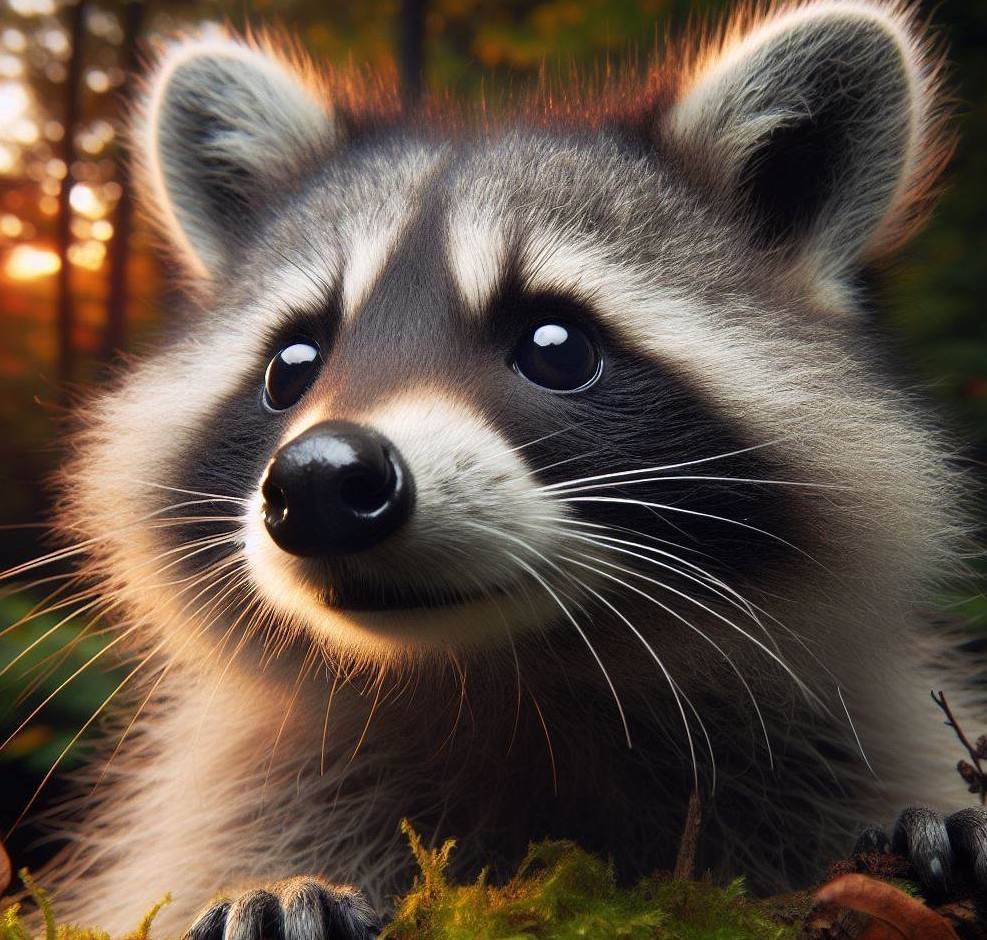| Characteristic | Information |
|---|---|
| Scientific Name | Procyon lotor |
| Size | 23 to 37 inches (60 to 95 centimeters) in length |
| Weight | 4 to 23 pounds (2 to 10 kilograms) |
| Distinctive Features | Thick, grayish-brown fur with black facial markings, ringed tail, dexterous paws with sharp claws, keen eyesight and sense of smell |
| Habitat Preferences | Forests, woodlands, wetlands, urban areas |
| Geographic Distribution | Native to North America, introduced to other parts of the world |
| Activity | Nocturnal |
| Diet | Omnivorous, consuming a wide variety of food sources |
| Social Dynamics | Primarily solitary, but may form temporary groups or family units |
| Mating Season | Late winter or early spring |
| Gestation Period | About 63 days |
| Litter Size | Typically 4-6 young |
| Lifespan | 2-3 years in the wild, up to 10 years in captivity |
| Conservation Status | Not currently considered endangered or threatened |
| Threats | Habitat loss, urbanization, disease |
| Conservation Efforts | Habitat protection and restoration, public education, research |
Raccoons: Adaptable and Intelligent Mammals
Raccoons are familiar creatures to many people, often seen as mischievous bandits rummaging through trash cans or ambling along city streets. But beyond their reputation as urban dwellers, raccoons are fascinating and adaptable mammals that have thrived in a variety of habitats across North America.
Physical Characteristics and Adaptability
Raccoons are medium-sized mammals with distinctive black facial markings, a ringed tail, and thick, grayish-brown fur. Their dexterous paws, equipped with sharp claws, enable them to climb trees, swim in water, and manipulate objects with remarkable dexterity. This adaptability is evident in their diverse habitat preferences, ranging from forests and woodlands to wetlands and urban areas.
Nocturnal Habits and Omnivorous Diet
Raccoons are primarily nocturnal animals, emerging under the cloak of darkness to forage for food. Their omnivorous diet reflects their opportunistic nature, consuming a wide variety of food sources, including fruits, vegetables, nuts, insects, small mammals, and carrion. This adaptability allows them to thrive in different environments and exploit available resources.
Social Dynamics and Reproduction
Despite their solitary nature, raccoons exhibit complex social interactions, communicating through vocalizations, body language, and scent marking. Mating typically occurs in late winter or early spring, with females giving birth to litters of 4-6 young. Mothers raise their young until they are independent, teaching them essential survival skills.
Conservation Status and Threats
While raccoons are not currently considered endangered or threatened, they face various threats, including habitat loss due to urbanization and deforestation. They are also susceptible to diseases, such as canine distemper and raccoon rabies. Conservation efforts focus on habitat protection, public education, and research to understand and protect raccoon populations.
Raccoons in Our World
Raccoons play an important ecological role as scavengers, helping to control insect and small mammal populations. Their presence also contributes to nutrient cycling and seed dispersal. As we share our world with these adaptable and intelligent mammals, it is important to understand their behavior, respect their habitat needs, and coexist with them harmoniously.
Where Raccoons can be found:
Native range:
- United States
- Canada
- Mexico
- Central America (Panama, Nicaragua, Belize, El Salvador, Costa Rica, Honduras, and Guatemala)
- Bahamas
- Caribbean islands (Cuba, Hispaniola, Jamaica, and Trinidad and Tobago)
Introduced range:
- Germany
- Russia
- Japan
- South Korea
- Taiwan
- China
- Vietnam
- Laos
- Cambodia
- Thailand
- Myanmar
- Malaysia
- Singapore
- Indonesia
- Philippines
- Papua New Guinea
- Australia
- New Zealand
Hey there, fellow nature enthusiasts! I’m Mark Gray, the passionate owner of OutdoorAnimals.com, a hub dedicated to uncovering the incredible world of outdoor animals. Whether you’re a hiker, a four-wheeler, or just someone who revels in the beauty of the great outdoors, you’re in the right place. I seek to understand all varieties of animals, from the great elk to the simple mouse, my goal is to write and share this knowledge with the public.

